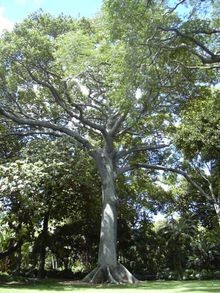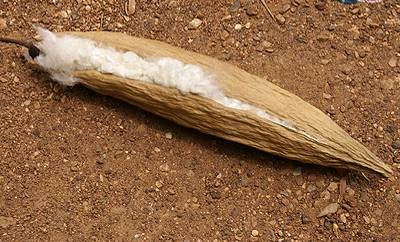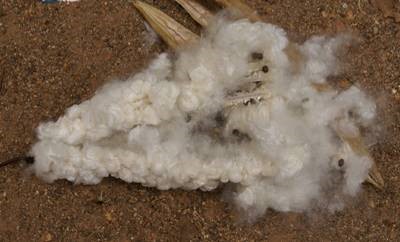Resource 6: The kapok tree
![]() Teacher resource for planning or adapting to use with pupils
Teacher resource for planning or adapting to use with pupils
 | The kapok tree is a tropical tree which is common in parts of South America, the Caribbean, and tropical West Africa. You can find the kapok in the Capital Territory region around Abuja. The tree can grow up to 70 metres (230 feet) tall, and the trunk can be up to 3 metres (10 feet) in diameter. The trunk and many of the larger branches have large, strong thorns on them. The leaves come in groups of 5 to 9 at a time, and they can be up to 20 centimetres long. The flowers on the leaves can produce well over 200 litres of nectar per tree in a season. This is why bats like the tree so much. They sometimes travel as much as 12 miles between trees to drink the sweet nectar. The adult trees produce several hundred 15 centimetre seed pods. A fluffy yellow or white fibre surrounds the seeds. This fibre is also called kapok. |
The kapok fibre is light, burns easily, but does not absorb water easily. It is used as filling for mattresses, pillows and cushions. The seeds can be used to make soap or fertiliser for crops.
 Kapok seed pod |  Kapok fibre |
Text adapted from http://en.wikipedia.org/ wiki/ Ceiba_pentandra (Accessed 2008)
Picture of kapok tree from http://en.wikipedia.org/ wiki/ Ceiba_pentandra (Accessed 2008)
Pictures of kapok seed pod and fibre from
http://www.thailex.info/ THAILEX/ THAILEXENG/ LEXICON/ kapok.htm (Accessed 2008)
Both sites accessed on 23/06/07
Resource 5: Text on the baobab



